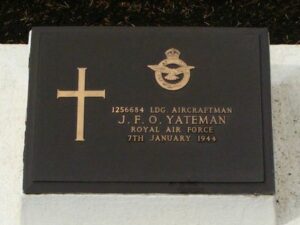Llanafan is a small village between Tregaron and Aberystwyth, situated north of the main B4340 road, and is around ten miles from Aberystwyth and Tregaron. The Parish Church is dedicated to St Afan, and contains the War Memorial to the men of the parish who fell during both World Wars.
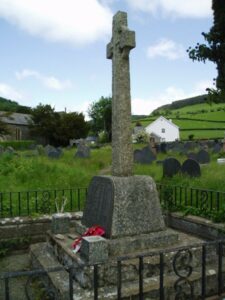
The Great War, 1914-1918
Joachim Bonner, Private, 14540, South Wales Borderers. Joachim was the son of Evan and Sarah Bonner, of 3, Brewer Street, Aberystwyth. He enlisted at Bridgend into the 5th Battalion, South Wales Borderers, which was attached to 58 Brigade, 19th (Western) Division. The Division moved to France during July 1915, and moved to positions near Loos, where it took part in the opening attack of the Battle of Loos on 25 September 1915. The following year the Division moved to the Somme, where it took part in the second wave of the attack on Ovillers-La Boiselle on 1 July, capturing the village at heavy cost. It then fought through the Somme Battles of Pozieres and the Ancre in 1916. In 1917 the Division moved North to Ypres, taking part in the Battle of Messines. Joachim was killed just prior to the launching of the Messines offensive, on 6 May 1917. He was 27 years old, and is buried at Vlamertinghe Military Cemetery, Belgium.
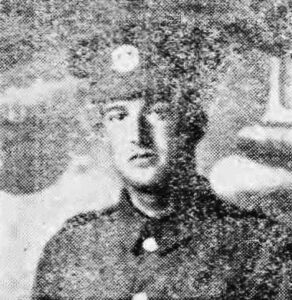
William Edwards, Private, 42161, Welsh Regiment. William was the son of Morgan and Margaretta Edwards, of Rhydy-garreg, Llanafan, Crosswood. He enlisted at Rhigors into the 23rd Battalion, Welsh Regiment, which was known as the Welsh Pioneers, and was attached to the 28th Division. During January 1915 it moved to France, landing at Le Havre and moved to the Western Front, where it saw its first major action during the Second Battle of Ypres, suffering heavy casualties. After rebuilding throughout the summer of 1915, the Division took part in the Battle of Loos. During October 1915, the Division embarked at Marseilles, and proceeded to Egypt, and in November moved on to Salonika where the Division then remained. William was invalided home from Salonika, and died on 24 August 1918, aged 34. He is buried at Aberdare (Bryn-y-Gaer) Cemetery.
Albert Pryse Evans, MM, Private, 78181, Royal Welsh Fusiliers. Albert was born at Pantyronen, Llanafan, the son of Evan and Jane Evans. His father was a Tailor, and by 1911 had moved the family to 8, Standard View, Ynishir, Rhondda. Albert enlisted at Cardiff into the army, and in 1918 was posted to France, joining the 16th Battalion, Royal Welsh Fusiliers, which was attached to 113 Brigade, 38th (Welsh) Division. Albert probably joined the battalion on the Somme, prior to its assault over the River Ancre on 21 August 1918, and would have taken part in the divisions advance across the old Somme battlefields towards the Hindenburg Line. Albert was killed in heavy fighting on the edge of the Forest of Mormal on 4 November 1918, aged 19. He is buried in Englefontaine British Cemetery, France. He was awarded the Military Medal during the last days of the war. He does not appear to be commemorated locally.
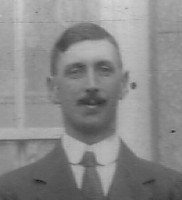
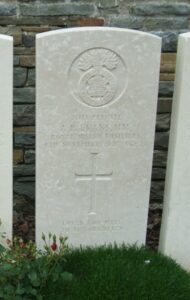
Job Evans, Guardsman, 28404, Grenadier Guards. Job was the son of Thomas and Mary Anne Evans, of Pantyronnen, Llanafan, Crosswood. He enlisted at Aberystwyth into the army, and was posted to the 2nd Battalion, Grenadier Guards, which was attached to 1st Guards Brigade, Guards Division. The Division formed in France in August 1915, bringing together all of the various Guards units that had been with other Divisions, and saw its first major action during the Battle of Loos on 25 September 1915, remaining in the area during the coming months, where it also fought in the subsequent Action of Hohenzollern Redoubt. In July 1916 the Division moved to the Somme, where they fought at the Battle of Flers-Courcelette, and then at the Battle of Morval, capturing Lesboeufs Village. They remained here for the winter, and in March 1917 took part in the advance caused by the German Retreat to the Hindenburg Line. Later that year they moved north to Ypres, where they fought at the Battle of the Pilckem, and then at the Battle of the Menin Road, Battle of Poelcapelle and the First Battle of Passchendaele. November saw them move south again, where they took part in the Battle of Cambrai. They remained in the area over the final winter of the war, and were stationed near Gouzeaucourt when the German Spring Offensive hit the area on 21 March 1918. The Guards saw fierce fighting over the coming days as the British retreated on the Somme, before the line there was stabilised in April 1918. Job was killed in action during the build up to the great Allied offensive, on 17 August 1918. He was 23 years old, and is buried at H.A.C. Cemetery, Écoust-St. Mein, France.
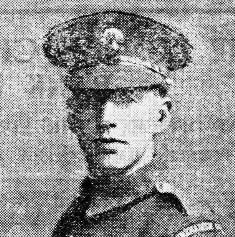
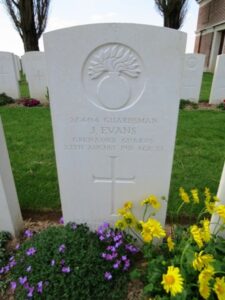
John Davis Evans, Gunner, 96937, Royal Field Artillery. John was born at Llanafan in 1890, the son of William and Jane Evans. By 1901 the family had moved to 64, Lake Street, Ferndale, Rhondda. John worked as a collier prior to enlisting at Ferndale into the Royal Field Artillery. He was posted to the Middle East on 21 July 1915, joining the 14th Battery, 55th Brigade, Royal Field Artillery, which was attached to the 13th (Western) Division. John died during the advance into Mesopotamia on 10 June 1916, aged 26. He is buried in Amara War Cemetery, Iraq. He does not appear to be commemorated locally.
Evan Evans Griffiths, Private, 581, Australian Imperial Force. Evan was the only son of Elizabeth Lewis, of Penrhiwfelen, Capel Sion. He emigrated to Australia at the age of 16, and found work as a farm labourer, and enlisted in February 1915 into the 44th Battalion, Australian Infantry. The Battalion was raised at Claremont, Western Australia in February 1916, as part of the 11th Brigade, 3rd Australian Division, and left Australia on 6 June 1016 for England. It arrived in France on 27 November 1916 and entered the front line trenches of the Western Front for the first time on 29 December 1916. The Division battalion fought in its first major action at the Battle of Messines between 7 and 10 June 1917. Later that year it took part in the Battle of Broodseinde Ridge on 4 October 1917. The Division consolidated its lines during the following day, and Evan was reported as having gone souvenir hunting in an abandoned German pill-box, when it was struck by a German shell, killing him instantly. He was 23 years old, and was buried on the battlefield by his comrades. In the 1920’s his grave was exhumed, and Evan was re-interred at Tyne Cot Military Cemetery, Belgium.
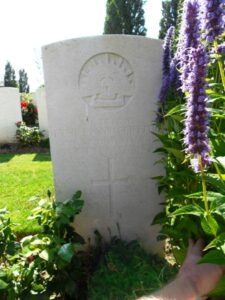
Alfred Ernest Howell, Sergeant, 237386, Canadian Infantry. Alfred was born on 18 January 1880, the son of Alfred and Sarah Howell, of Glynbwch, Crosswood near Aberystwyth. Formerly a butler and valet in Staffordshire he emigrated to Canada with his wife Harriet in 1910 and was employed in a foundry in Toronto. On 3 April 1916 at the age of 38 he enlisted into the Canadian forces having served in the military before the outbreak of war. Before going to France, he served as an instructor to the Canadian troops in England. In 1918 Alfred was in France with the 54th Battalion, Canadian Infantry. The battalion was attached to the 11th Brigade, 4th Canadian Division. Alfred joined the battalion in time to take part in the Battle of Amiens on 8 August 1918, the turning point of the war. A fantastic victory was achieved at Villers-Brettoneux that day, which began the great offensive towards the Hindenburg Line. After just five weeks active service, Alfred was killed in action on 2 September 1918, aged 38. He is buried in Dury Mill Military Cemetery, France.
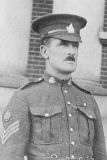
Trevor Jones, Private, 370072, Royal Army Medical Corps. Trevor was the son of Hugh and Charlotte Jones, of Broncoed, Crosswood. He enlisted at Cardiff on 7 April 1915 into the Royal Army Medical Corps, and was posted to the 53rd Welch Casualty Clearing Station, Royal Army Medical Corps, which was attached to the 53rd (Welsh) Division. The 53rd (Welsh) Division sailed from Devonport in July 1915, and arrived at Mudros on 5 August 1915. From here they moved to Gallipoli, landing on 9 August 1915. Here the Division was immediately thrown into action, and spent the next few days in isolated pockets, fighting against a Turkish counter-attack during the Battle of Sari Bair, then the ensuing Attack on Scimitar Hill. The Division remained here throughout the coming months, and suffered severe losses in manpower strength during the great November 1915 blizzard on Gallipoli, when its total strength was reduced to less than that of a full-strength Brigade. On 11 December 1915 the Division was evacuated to Mudros, and by 23 December 1915 were moved to Egypt. They remained on the Suez Canal Defences for the next twelve months, and in early 1917 moved into Palestine. Trevor was wounded and badly burnt by bombs during the First Battle of Gaza, and evacuated to hospital at Cairo, where he died of his wounds on 13 May 1917. He was 22 years old, and is buried at Cairo War Memorial Cemetery, Egypt.
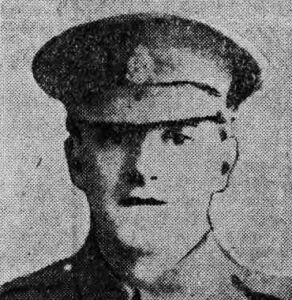
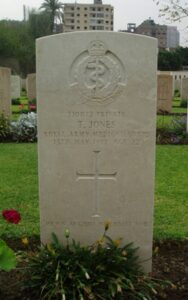
David Lewis, Private, 28270, South Wales Borderers. David was the son of William and Sarah Lewis, and the husband of Annie Lewis, of Aberdauddwr, Llangwyryfon. He enlisted at Aberystwyth into the South Wales Borderers, and was posted to the 11th Battalion, South Wales Borderers, which was attached to 115 Brigade, 38th (Welsh) Division. The Division had landed in France during December 1915 and had spent their first winter in the trenches near Armentieres. In June they marched south to the Somme, where they were tasked with the capture of Mametz Wood. The attack on the wood began on 7 July, but met with fierce resistance, and it took until 14 July to totally clear the wood. The Division suffered terrible casualties at Mametz, and were taken out of the line, and moved to Ypres to rebuild. Here they fought at the Battle of Pilckem Ridge, and the Battle of Langemarck. David was killed at Langemarck on 23 August 1917. He was 29 years old, and is commemorated on the Tyne Cot Memorial, Belgium.
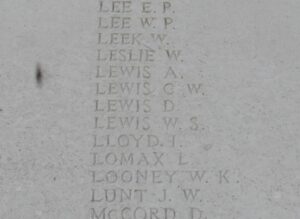
Isaac Lloyd, Private, 28289, South Wales Borderers. Isaac was the son of Isaac Lloyd, of Talybont, and the husband of Elizabeth Lloyd, of Tynant Cottage, Llanafan, Crosswood. He enlisted at Aberystwyth into the South Wales Borderers, and was posted to the 1st Battalion, South Wales Borderers, which was attached to 3 Brigade, 1st Division. The Division had been in France since the outbreak of war, taking part in the retreat from Mons to the Marne, and fighting at First Ypres. The following year saw them in action again at the Battle of Aubers, before moving South to Loos, where they fought during the Battle of Loos, and the action at the Hohenzollern redoubt. During the summer of 1916 the Division moved south to the Somme, where they fought during the opening of the Somme Offensive at the Battle of Albert, then at Bazentin, Pozieres, Flers-Courcelette and Morval. They followed the German retreat to the Hindenburg Line in early 1917, and were then briefed for an operation on the Flanders Coast, and moved there during the summer of 1917. When the Third Battle of Ypres stalled in the mire, the Division was recalled to Ypres, where they fought at the Second Battle of Passchendaele. Isaac was killed in action here on 10 November 1917. He was 28 years old, and is commemorated on the Tyne Cot Memorial, Belgium.
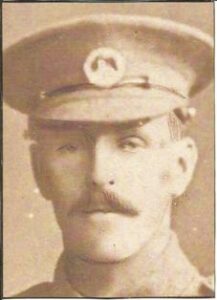
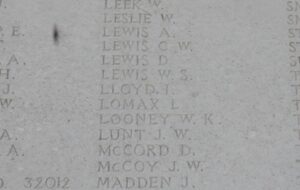
Evan Owen, Sergeant, 180722, Royal Garrison Artillery. Evan was the son of Vaughan and Jane Owen, of Penbont, Llanafan, Crosswood, and the husband of Catherine Owen, of Pantyronen, Llanafan, Crosswood. He enlisted at Porth into the Royal Garrison Artillery, and was posted to France with the 301st Siege Battery, Royal Garrison Artillery. During March 1918 the Battery was in the Somme sector, and Evan was killed here when the German offensive was launched on 21 March 1918. He was 29 years old, and is commemorated on the Arras Memorial, France
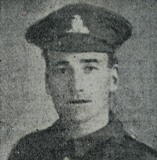
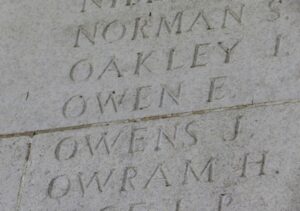
David Morgan Richards, Sapper, 82588, Royal Engineers. David was the son of John D. and Margaret Richards, of Bontfach, Crosswood. He served with the 123rd Field Company, Royal Engineers, which was attached to the 38th (Welsh) Division. The Division had landed in France during December 1915 and had spent their first winter in the trenches near Armentieres. In June they marched south to the Somme, where they were tasked with the capture of Mametz Wood. The attack on the wood began on 7 July, but met with fierce resistance, and it took until 14 July to totally clear the wood. The Division suffered terrible casualties at Mametz, and were taken out of the line, and moved to Ypres to rebuild. Here they fought at the Battle of Pilckem Ridge, and the Battle of Langemarck. They then moved to the Armentieres area to rebuild, and it was here that David was killed in action on 20 November 1917. He was 24 years old, and is buried at Erquinghem-Lys Churchyard Extension, France.
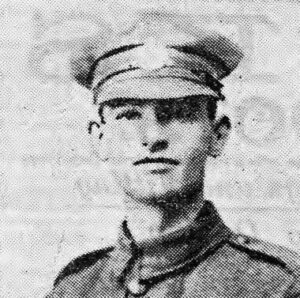
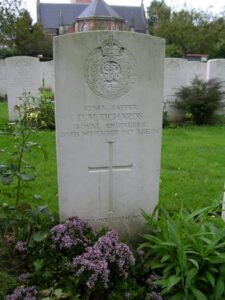
David Rowlands, Private, 20210, King’s Shropshire Light Infantry. David was born at Cnwch Coch, and enlisted at Abertridwr into the Royal Field Artillery. He was posted to France, joining the 1st Battalion, King’s Shropshire Light Infantry, which was attached to 16 Brigade, 6th Division. On 10 September 1914 the Division landed at St Nazaire and proceeded to the Western Front, and arrived in time to reinforce the hard-pressed BEF on the Aisne, before the whole army was moved north into Flanders. Here they took part in the Action of Hooge during June, 1915, and in 1916 moved to the Somme, where the Division fought at the Battle of Flers-Courcelette, the Battle of Morval and the Battle of Le Transloy. The following year saw them at Arras, where they fought at the Battle of Hill 70. David was killed in action at Hill 70 on 17 April 1917. He is commemorated on the Loos Memorial, France.
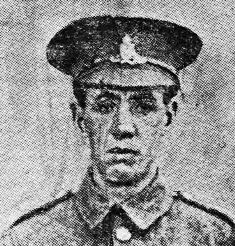
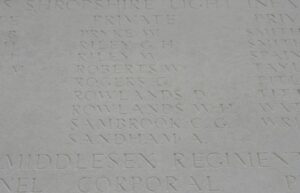
World War Two, 1939-1945
Iorwerth Evans, Stoker, LT/KX125165, Royal Naval Patrol Service. Iorwerth was the son of David and Hannah Evans, of Llanafan. He served with the Royal Naval Patrol Service aboard H.M. Trawler Northern Chief. The Trawler had been taken over by the Admiralty on 31 August 1939, and converted for use in anti-submarine work, being armed with a single 4″ gun. Iorwerth died on active service while Northern Chief was at Durban on 16 March 1944. He was 40 years old, and is buried at Durban (Stellawood) Cemetery, South Africa.
Thomas James Hazeldine, Private, 3780130, King’s Liverpool Regiment. Thomas was born at Llanafan in 1915, the son of Thomas James Hazeldine and Margaret Hazeldine. The family later resided at Cross Heath, Staffordshire, and Thomas served with the 13th Battalion, King’s Liverpool Regiment. The battalion formed part of the famous Chindit force in Burma, which took the fight to the Japanese in the dense jungles. Thomas was killed in Burma on 19 July 1943, aged 32, and is buried in Rangoon War Cemetery, Myanmar. Thomas is not commemorated at Llanafan. The photograph has been kindly supplied by Tony Beck.
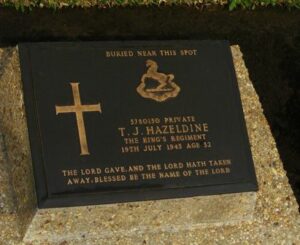
Thomas Parry Jones, Gunner, 1492437, Royal Artillery. Thomas was the son of Thomas Oliver Jones, and of Mary Ellen Jones, of Llanafan. He served with 12 Coast Regiment, Royal Artillery, which was part of the Hong Kong garrison from December 1940. After the Japanese attack on Pearl Harbour on 7 December 1941, they began to launch an assault on the British Colony of Hong Kong the following day. After several days of heavy fighting, the Japanese forced their way into Victoria Harbour by 18 December 1941, after stubborn fighting by the Allied troops garrisoned there. Thomas was killed in action in Hong Kong on 18 December 1941, just a week before the garrison was forced to surrender. He was 23 years old, and is commemorated on the Sai Wan Memorial, China. The photograph below was kindly supplied by Tony Beck.
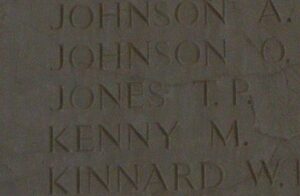
Hugh Lewis Pugh, Flying Officer, 106600, Royal Air Force Volunteer Reserve. Hugh was born at Llanafan, the son of Hugh Lewis Pugh and Elizabeth Margaret Pugh, of Wandsworth Common, London. He was commissioned into the Royal Air Force Volunteer Reserve on 12 September 1941, and posted to India as a Flying Officer. Hugh was killed on active service in India on 27 November 1943. He was 37 years old, and is buried at Delhi War Cemetery, India.
Leslie Charles Alexander Wall, Flying Officer (Navigator), 145035, Royal Air Force Volunteer Reserve. Leslie was the son of Mr and Mrs Archibald Charles John Wall, of Crosswood, Cardiganshire. He was commissioned on 29 June 1943 as a Flying Officer into the Royal Air Force Volunteer Reserve, and was posted to 604 Squadron, RAF, which was a night fighter squadron, equipped with the De Havilland Mosquito. The Squadron took part in night intruder operations over occupied France, and after the D-Day landings of 6 June 1944, supported operations in Normandy. Leslie was killed on one such operation on 2 August 1944. He is buried in Bayeux War Cemetery, France.
John Frederick Owen Yateman, Leading Aircraftman, 1256684, Royal Air Force Volunteer Reserve. John was born in 1922, the second son of Frederick and Elizabeth Yateman, of Sway House, Sway, Hampshire. He served with the Royal Air Force Volunteer Reserve, and was based in the Far East. John was one of many Allied servicemen captured during the Japanese invasion on Singapore, Hong Kong, Malaya and Burma during December 1941, and was taken to Japan to be used for forced labour. He became ill with pneumonia, and died at Zent Suiji Camp, Japan on 7 January 1944, aged 21. He is now buried in Yokohama War Cemetery, Japan.
